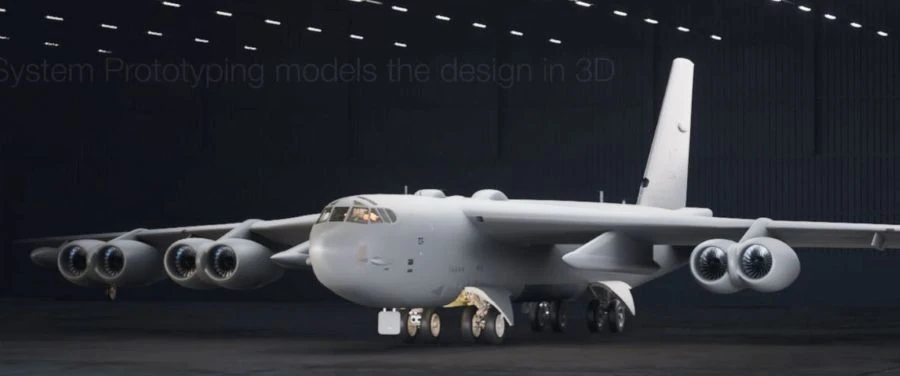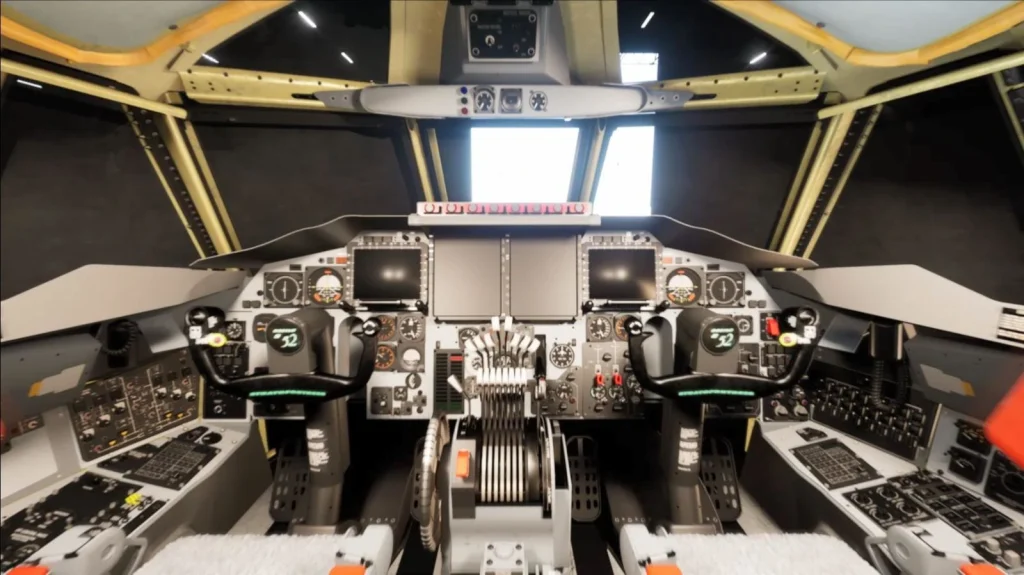The United States Air Force (USAF) operates 76 B-52H Stratofortress strategic bombers across three bomber wings. Two wings with five squadrons belong to regular USAF forces, while one with two squadrons is part of the USAF reserve; the reserve wing is primarily responsible for training B-52 operators. There are 55 B-52s, or 11 aircraft per squadron for regular combat squadrons.
Rolls-Royce North America was selected as the supplier of 608 new F130 engines for all 76 B-52H bombers by the United States Air Force in 2021. The new engines have numerous benefits. Specifically, it will increase the B-52’s combat range by 40%, or 14,000 kilometres without in-flight refuelling. With in-flight refuelling, the B-52’s range is only limited by the endurance of its crew.
The modified B-52, also known as the B-52J or B-52K, is illustrated in a computer depiction that reveals several modifications. The newly shaped nacelles with TF33-PW-10 engines are positioned higher and further forward than the original nacelles. According to Air & Space Forces Magazine (ASFM), the first publication to present a visual of the modified B-52, the higher-mounted engines are intended to boost ground clearance, which will, among other things, lessen the suction of foreign objects during takeoff or landing.

The nose was also redesigned in conjunction with the new derivative of AN/APG-79 radar from the F/A-18E/F Super Hornet fighters. The new radar is significantly lighter and smaller than the original AN/APQ-166 mechanical radar. According to ASFM, this will enable the installation of more powerful electronic warfare systems under the bomber’s nose. The initiative to install new radars is separate from replacing the engines and will occur early.
The AN/ASQ-151 Electro-Optical Viewing System (EVS) reconnaissance-navigation complex’s powerful daylight / thermal imaging optoelectronic sensors were removed from the B-52’s characteristic lower “chin” when the aircraft was upgraded. Two black-and-white panels provided information from the EVS system in the cockpit. These were also eliminated as part of the cockpit’s refurbishment.
The EVS complex was primarily utilised for low-altitude (night) flights, reconnaissance and observation missions, and the use of the aircraft’s armament systems. A new radar and Litening or Sniper containers will assume the complex’s duties. The new radar and targeting containers will be able to communicate with one another, combine their data, and show it on new LCD monitors in the cockpit. In addition, the B-52’s ability to penetrate hostile territory at a low altitude well above enemy territory is no longer considered; the B-52 will primarily carry long-range missiles.
AGM-183A ARRW (Air-Launched Rapid Response Weapon) hypersonic missiles with a range of 1,600 kilometres or the forthcoming LRSO (Long-Range Stand-Off) nuclear missile with an anticipated range of more than 2,500 kilometres are probable. Multiple ARRW tests have been successful in the past few months. The B-52 should be deployable with the ARRW as early as next year.
The JASSM (Joint Air-to-Surface Standoff Missile) family, which includes the anti-ship variant of the LRASM (Long Range Anti-Ship Missile), is also on the list of possible armaments. The above ammo types will enable the B-52 to attack an enemy with sophisticated air defences.

In addition to receiving new engines and radar, the B-52 will receive a redesigned cockpit, a “hybrid” analogue-digital engine control system, and enhanced navigation and communication equipment. The update will facilitate the removal of one crew member. Undoubtedly, the aircraft will also undergo a general check, the replacement of worn-out components, and a variety of partial repairs and enhancements.
Two massive semicircular overlays are seen near the wing roots on the fuselage. The Boeing company’s press office stated that the covers are not included in the current modernisation programme but needed to clarify their role. According to AFM, it appears to be a more powerful and interference-resistant satellite navigation and/or communication system.
The USAF will receive the first two updated B-52s with new engines for flight testing by the end of 2025. Deliveries of the first batch of aircraft (likely one squadron) for operational usage will conclude in 2028, and all remaining B-52s will have their engines replaced by 2035. Therefore, engines will be replaced at the rate of one B-52 squadron yearly.
B-52 Stratofortress bombers
Typically referred to as the “Big Nasty Flat Guy” (BUFF), The first B-52 test flight took place in 1952. In 1954, the United States Strategic Aviation Brigade adopted the bomber. All 744 Flying Fortresses, except for a few B-52s used for training, were manufactured by Boeing between 1951 and 1963 and served with the US strategic aviation brigade.
In 1957, three B-52 aircraft circumnavigated the world nonstop, with in-flight refuelling, a distance of 42,000 kilometres to show their intercontinental flight capability. Five years later, the B-52H flew 21,000 km nonstop without aerial refuelling, setting a record that the Voyager aircraft broke 25 years later. In 1965, B-52 planes bombed Vietcong strongholds in Vietnam. In 1972, B-52s played a crucial role in the 11-day bombardment of North Vietnam to coerce its government back to the Paris ceasefire bargaining table. Since 1984, the United States Air Force has solely utilised B-52G and B-52H bombers with shorter tail. They participated in Operation Desert Storm against Iraq.
